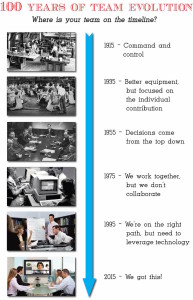Last week I wrote about Glassdoor and the ongoing comments from employees regarding how their experience depended on the manager. This is not new information, along with employee comments this is a subject that goes back thousands of years.
Mencius (372 – 289 BC) of Management, often referred to as China’s Second Sage, Mencius maintained and strengthened the Confucian tradition and added his own views on topics that are relevant to modern day managers. Mencius made managerial recommendations in such diverse areas as corporate governance, interpersonal relations, economic development, and human resources.
(372 – 289 BC) of Management, often referred to as China’s Second Sage, Mencius maintained and strengthened the Confucian tradition and added his own views on topics that are relevant to modern day managers. Mencius made managerial recommendations in such diverse areas as corporate governance, interpersonal relations, economic development, and human resources.
In 1937, Roethlisberger and William John Dickson published the first comprehensive findings of the Hawthorne experiments. He also authored Management and the Worker in 1939. The book was voted the tenth most influential management book of the 20th century in a poll of the Fellows of the Academy of Management.
The question that is still outstanding is how can we do better. Trina Hoefling, author of Working Virtually: Managing People for Successful Virtual Teams and Organizations and co-founder of The Smart Workplace developed the three-fold path for creating and maintaining systems, protocols, and processes that support expanded emotional bandwidth to both traditional and distributed teams without geographical or functional limitations.
Today I am going to share information on the 2nd Path; engaging and supporting people. This is the social process of management and I believe is the most important.
This is an excerpt from WORKING VIRTUALLY: Leading Your Team, Career and Organization in a Mobile Work World 2nd edition, available Fall 2016:
We know that people are more willing to help each other when they know one another. They want to help people they like. Facilitating relationships as well as meetings, projects and performance; will help the team develop bonds and direct feedback to one another.
If managers and teammates display confidence in each other, workers feel trusted and valued, and are more likely to hold their own work to higher standards. If every team member has confidence in his or her work, knows they are valued, the team will synergize. When everyone can relate to one another, they are better able to collaborate virtually.
People also tend to attach to people with whom they share common ground. A team certainly qualifies as common work ground, but commitment is deepened when the team actually feels that it is a “community” with shared purpose, responsibilities, rituals and habits, successes and challenges, stories, symbols, brand, history. It’s easy to jump into teamwork without first taking precious time for team development sessions.
Managers have to facilitate the team’s talk, at least at first. Conversations are an irreplaceable way that relationships develop, trust grows or declines, and collaboration happens. Small talk actually improves social intelligence, especially as people get to know each other. Chitchat gives everyone a chance to get familiar with each other’s style. Some people are more naturally animated or reactive. To know that helps the team recognize when something is off, when behavior is out of the ordinary for that person.
High performance teams talk, a lot. Much informal learning occurs through conversation. Getting people talking about something they care about gives conversations passion and opens a path for easy sharing. A good conversation is a gestalt – it creates something bigger than the sum of its parts. “Talking” explores new territory and creates new understandings, especially if the team gets past the download and debate-style communication so common at work.
People hanging around talking isn’t a distraction. It’s the work of collaboration.
Pointers for A Conversation-Rich Team
- A team leader does not need to be aware of all conversations going on. For one thing, you don’t have time.
- If you have team members working together on an aspect of the project, when you speak with them, ask about each other’s perspective on the project.
- Invite responses to a question or issue in an online team conversation.
- Get a discussion going simply for exploration, not decision.
- Remind people to speak directly to one another. Especially if there is tension between team members, encourage them to “send the mail to the right address.”
- Assume the team is communicating, and expect people to be aware of each other’s contributions when asking about the project. Verify with simple questions in your one-on-ones, such as “When you spoke to Carol last, did she have any insight?”
Realize each meeting, email, phone call, IM becomes a stream of interrelated business conversations that impact team relationships. Conversation is part of the team’s work – Encourage it. People are more shy virtually. As one coaching client shared, “It’s more difficult for me when I don’t know the other members or don’t know them very well. I often feel like I’m not participating enough for fear of being too pushy or overbearing. I sometimes don’t contribute to the discussion because I often feel like an outsider.”
Facilitate!
To learn more about the three-fold path, download Chapter 3 – The Handbook of High Performance Virtual Teams. And stay tuned for our free The Smart Workplace Manager Kickoff course! Sign up for our community to keep up to date on new resources to help your workplace get smarter!.
~ Kathy Kacher, Workforce Solutions Expert and co-founder of The SMART Workplace







Leave A Comment
You must be logged in to post a comment.